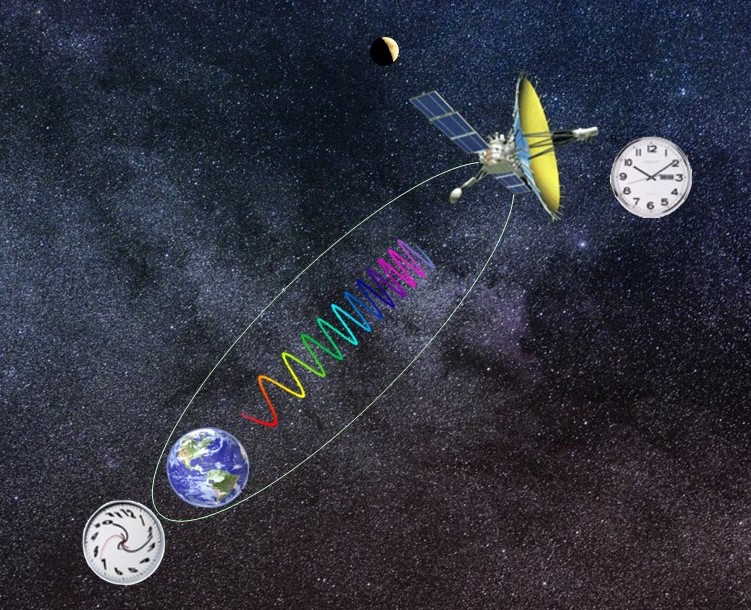Research, led by York University PhD student Nelson Nunes and supervised by Distinguished Research Professor Emeritus and Senior Scholar Nobert Bartel, verified Albert Einstein’s theory of general relativity and the Einstein equivalence principle (EEP) by measuring gravitational redshift – a change in the frequency of a lightwave – and the slowing of time over distances as far as the moon, of about 350,000 kilometres.
The EEP is a cornerstone of general relativity and predicts the existence of gravitational redshift. The EEP states that the gravitational mass of an object is equal to inertial mass. For instance, standing on Earth and experiencing weight is equivalent to being accelerated in a spacecraft far away from Earth without the influence of gravity.
“Testing the EEP is thought to be decisive to test gravitational theories, including Einstein’s general relativity,” said Bartel. “Finding inconsistencies could perhaps help with generating new ideas on how to combine gravitational theories with the other pillar of our modern understanding of the physical world, which is quantum theory.”
The international group of astrophysicists involved in the project, which included York Senior Research Associate Michael Bietenholz and scientists from Russia, the Netherlands and Australia, used a highly accurate clock on a spacecraft named RadioAstron, which was launched in 2011 in an elliptical orbit around Earth, to obtain the measurements.
Their measurements – published in the journal Classical and Quantum Gravity – showed that time on Earth flows slower by 0.7 times a billionth of what it is on the spacecraft far away from Earth – which adds up to a 20-millisecond difference in one whole year. Although the difference is miniscule, the change in time verifies the EEP, the overarching focus of the research.
One consequence of the EEP is the changing flow of time in a gravitational field and, closely related, the gravitational redshift. Gravitational redshift has the effect of shifting waves to lower frequencies; with light, this means a shift to red. With respect to time, gravitational redshift should cause time to slow down.

“All clocks are based on oscillators and tick according to how fast they oscillate,” said Nunes. “So the gravitational redshift has fundamental repercussions on the flow of time in a gravitational field. In other words, if we are far away from Earth in space and let our clock fall toward Earth, we should be able to measure the clock ticking slower and slower the more it approaches Earth. In the extreme case, were our clock to fall towards the event horizon of a black hole, a place of no return, we would expect to see time slowing down so much that at some point it would stop altogether.”
Although the team’s results are about 10 times less accurate than previous measurements reported in 2018 by a separate team using European Galileo navigation satellites, their experiment covers a much larger distance. Whereas the 2018 study measured gravitational redshift as far as about 25,000 kilometres from Earth, Nunes’ measurements went as far as 350,000 kilometres from Earth. The York team says the measurements could be improved further and with future similar space missions, could reach 1,000 times higher accuracies.
